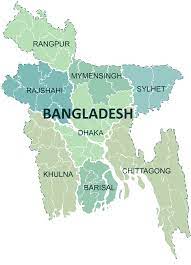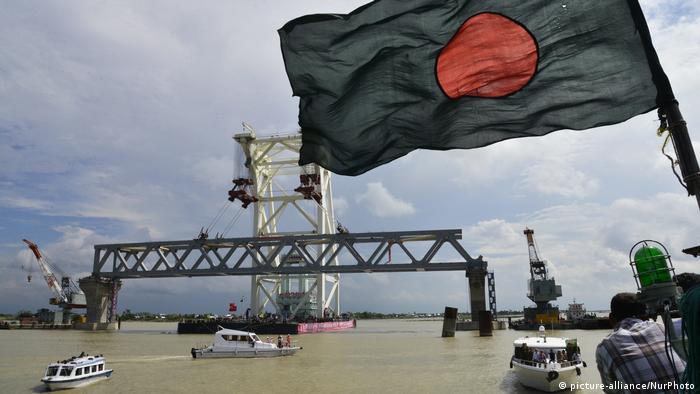Bangladesh’s journey as the new South Asian economic star: rise in their economy

Bangladesh and it’s rising economy
Bangladesh got its independence a mere 50 years ago so if you gave the title a double look, you’re not alone. But looks like the country is over shining its Asian neighbours, India and Pakistan, in terms of per capita income.
It wasn’t long ago when the Pakistan military’s American backers declared the country to be doomed to fail, yet here we are. Before we dive deep into the achievement and its repercussions, take a moment to acknowledge how considerable this is, especially for a country like Bangladesh, which got independence from the richer and much more powerful Pakistan in March 1971 amidst famines and wars, with millions of its people fleeing to India or getting killed by the Pakistani military.

However, there’s much more to this story of higher per capita income and its economic meaning than what meets the eye, which we’ll be discussing as we move forward. But before we do that, let’s shine a little light on the country’s journey so far.
In 1971, Pakistan was 70% richer than Bangladesh. Fast forward to 2021, Bangladesh has been reported to be 45% wealthier than Pakistan, a laudable feat on its own, given the 9 percent improvement in GDP per capita in the past year. Pakistan is consistently failing to perform better since the past few years in terms of economic development and is falling onto one debt trap after the other.
If Pakistan continues to walk on the path it is on today, it won’t be too surprising to witness it seeking help from Bangladesh by 2030, as deterred by former adviser to World Bank, Abid Hasan. And in case you were wondering why we’re talking about Pakistan this much, well, today’s Bangladesh was then east Pakistan, so imagining GDP per capita almost twice that of its homeland turned foe is shocking, to say the least.
Story behind the GDP per capita-
A report published by the Bangladesh’s secretary stated that Bangladesh’s per capita income in 2020 stood at USD 2,227, which is greater than the per capita income of both India ($1,947) and Pakistan ($1,543). As hard-to-accept fact as it might be, it is true that both India and Pakistan are poorer in terms of per capita GDP than Bangladesh. So while India got a little too comfortable in its seat as one of the strongest south Asian economies, Bangladesh is definitely signaling at a change in perspective and probable competition.
![Contribution of different sectors in GDP of Bangladesh [16]. | Download Scientific Diagram](https://www.researchgate.net/profile/Md-Shahinur-Islam/publication/273989754/figure/fig1/AS:650526278557706@1532108959654/Contribution-of-different-sectors-in-GDP-of-Bangladesh-16.png)
And even though Indian government had had a hard time acknowledging this, it is imperative for you to note that if the country’s performance continues to be dismal as it has been for quite some time now, we may be retrospecting at this piece of article from a remorseful lens. Ignorance is the key feature of Narendra Modi led NDA government and we’ve all been witnesses of its consequences, but a peek into Bangladesh’s success story would leave nothing but important lessons for the India economy, which are significant for us to iterate.
Their success majorly lies on three pillars- exports, social progress and fiscal cautiousness. Beginning from 2011, the exports of the country have constantly been rising at a huge ate of 8.6% per year. Give the credit of this success to the constant focus on products, like apparel, in which Bangladesh possesses a comparative advantage.
It should also be noted that 80% of Bangladesh’s export constitutes of garments. You must be wondering how Bangladesh has a comparative advantage over exports. Well, thank the trade policies. Trade policies of a country should be set according to its capability to produce the exported good, not in absolute terms but through a play of trade theory of comparative advantage and well, Bangladesh has done exactly that. Just in case you needed a reminder of good use of economic theory, here you go.

Another aspect which has led to the continued growth of exports, and therefore the per capita income of the country is the increased participation of women. Reports published by official soruces show that the share of women in Bangladesh’s labour force has been constantly rising, which, disapprovingly has decreased in India and Pakistan, more so after the COVID-19 pandemic. Bangladesh’s public debt to GDP ratio has also caught attention over the recent years for its commensurate amount. However, in India the ratio is very high. All of these directly account to the growing per capita income of Bangladesh.
But is GDP per capita the only basis for this increased confidence in Bangladesh?
GDP per capita is a tenuous measure to base our entire assessment on because again, it a measure of average, which evidently is extensively impacted by outliers. India’s case serves as one of the best examples for the aforementioned statement. As a result, there’s a lot that goes behind the declaration of economic star.
Here are the other factors are clearly showing the success of Bangladesh’s economy. The population of East Pakistan (now Bangladesh) was 42 million and the population of West Pakistan was 33.7 million back in 1951. But currently, Bangladesh’s population is much less than that of Pakistan. How, you ask? A sustained planning campaign helped reduce fertility rate in Bangladesh whereas the fertility rate in Pakistan is still very high.

The mention here is important because population definitely plays a negative role in a developing nation’s movement towards its stable point as per its resources, with prominent macroeconomic models serving evidence to it. Bangladesh’s health sector’s success cannot be neglected too, followed by remarkable progress in poverty reduction and sustained economic growth. All this led to better allocation of resources which therefore contributed to the eventual rise in the per capita income of Bangladesh and thus, betterment in prominent economic indicators.
However, like for any progressing economy, the success of Bangladesh has brought some issues with it too. One of them is the expected loss of the tariff free access to developed countries, which all the least developed countries receive, by 2026 due to the fast paced growth of the economy. However, the government could try not to lose the tariff free access to the developed economies by signing free-trade agreements. One other important problem which Bangladesh could face in the upcoming years is losing the comparative advantage it has as currently the country’s exports are restricted to only certain areas.
With rise in the economy, the need to diversify its export strategies will also arise. There should be accurate plans to transform the current export scenario in order to maintain the high growth of the economy. And as we all know, complete transformation of a growing economy is a task in itself, and would require a lot of time and capital.
Nevertheless, the path Bangladesh has come through is absolutely commendable keeping in mind the problems it has faced. Bangladesh has dealt with a number of considerable problems- Like India and Pakistan, it is also overpopulated with major portion of its population being illiterate and poor. It is frequently affected by calamities and experiences terrorism too and its failed democracy in 2018 elections.
However, the country has still managed to show signs of growth owing to the determination shown by the government for its goal to achieve excellency in human development and economic growth. According to reports, the country’s main goal is to rise exports, reduce unemployment, improve health of its people, and reduce the dependence on loan and financial aids.
The constant rise in the exports and the current per capita income, which is greater than that of India and Pakistan, has shown that if the government of Bangladesh works at this efficiency, the day is not far when Bangladesh will become the star of South Asia.




